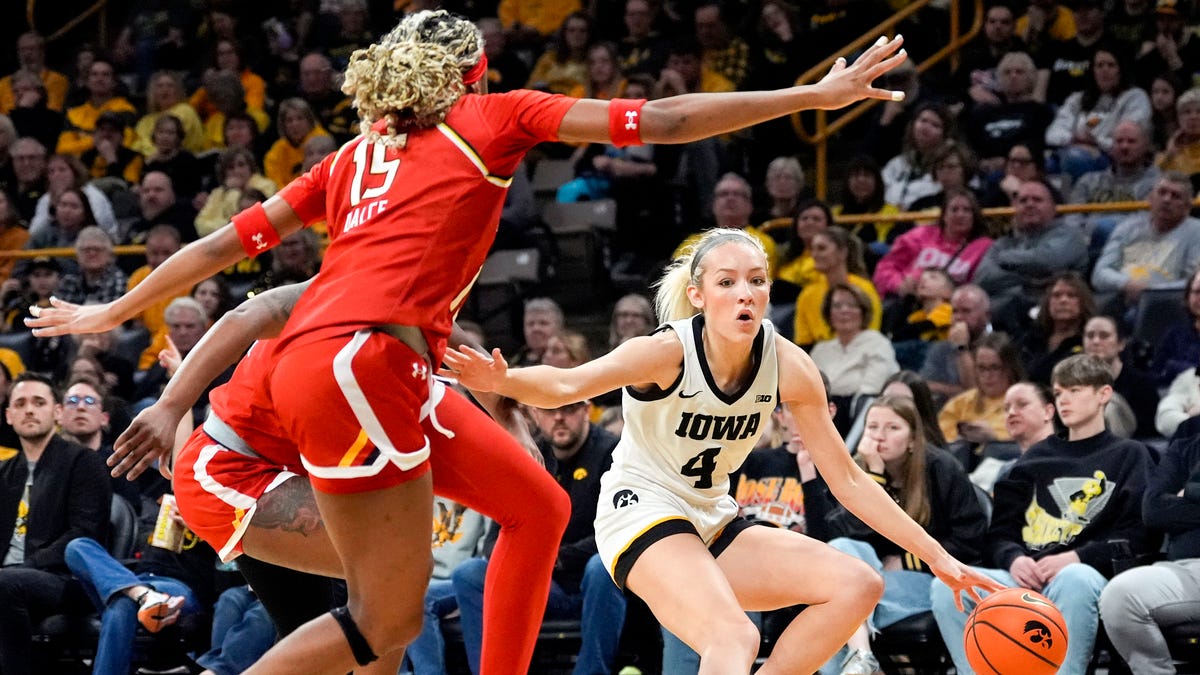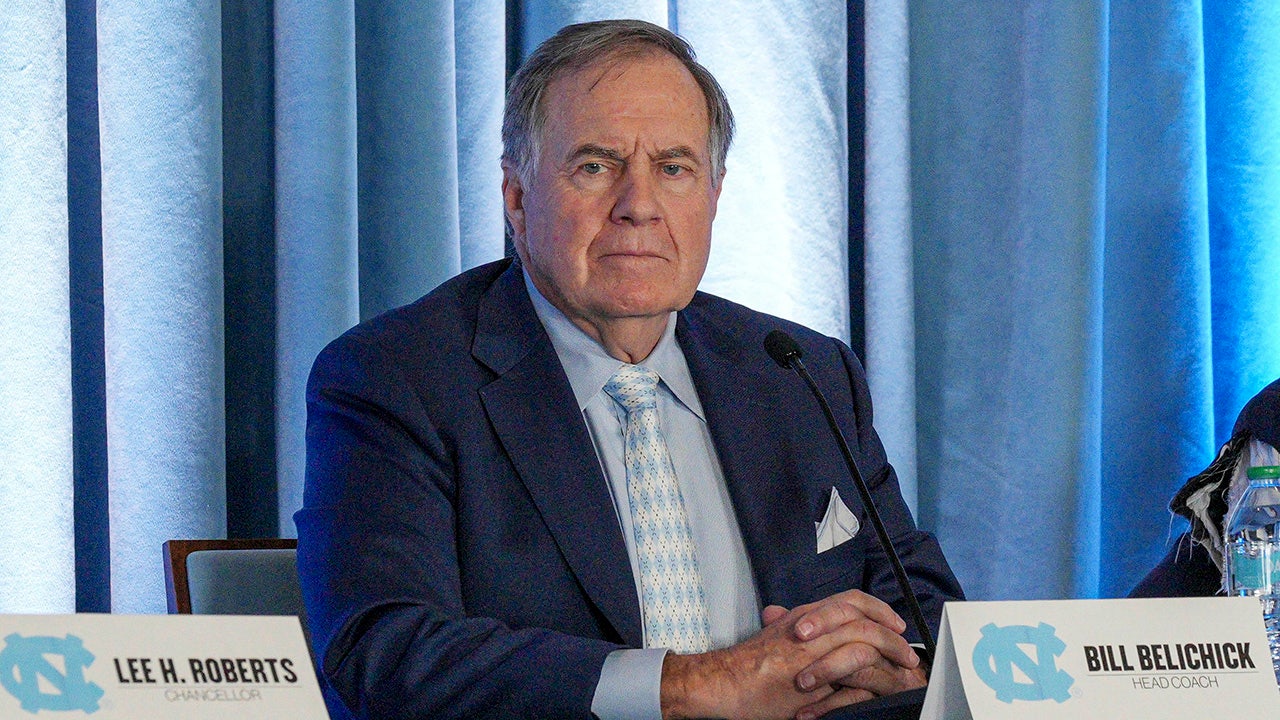Maryland
Takeaways from Maryland football’s Music City Bowl win

A season filled with highs and lows was capped off in the Music City Bowl on Saturday with an exclamation point when Maryland football rolled past Auburn, 31-13.
Behind stellar early quarterback play from Billy Edwards Jr. and Cameron Edge, the Terps jumped out to a 21-0 lead and the defense held strong throughout.
With the victory, Maryland clinched back-to-back eight-win seasons for the first time since 2002-03 and a third consecutive year with a bowl victory for the first time in program history.
“It was amazing to set history here and leave my mark, three bowl games in a row, and that’s amazing that it hadn’t ever been done here,” sixth-year wide receiver Jeshaun Jones said after his final game as a Terp.
Here are three takeaways from the game.
No Tagovailoa, no problem
The Terps entered a new era Saturday — one without Taulia Tagovailoa at the forefront.
In the first quarter, Edwards and Edge showed a glimpse of what Maryland fans hope the future of Maryland’s quarterback position holds. Three first-quarter drives ended in touchdowns, with the duo combining for almost 200 scrimmage yards.
“All they got to do is execute,” Terps head coach Mike Locksley said. “I’m really happy with the way they performed, both of those guys.”
Edwards started the game, easily orchestrating two quick scoring drives. He capped off the first one in under two minutes with his sixth rushing score in the last three games after finding Roman Hemby on a 61-yard screen pass. On the ensuing drive, Edwards, who was named game’s most valuable player, took the team 75 yards down the field in a methodical five minutes, 28 seconds.
Edge subbed in one the third drive and immediately threw a dart of nearly 60 yards to Kaden Prather which set up another easy score.
It wasn’t a perfect performance after that, but both players helped ignite Maryland’s dominant start which catapulted the Terps to victory.
“To be honest, I think we left a lot of meat on the bone and there’s a lot to improve from, but I’m not going to take away from that,” Edwards said of the win. “I am going to enjoy this one, and I’m really happy we were able to get the win.”
Edwards finished the game just 6-for-20 with 128 yards through the air while adding 50 rushing yards. Edge, who completed five of his six passes, will have an interception next to his name, but his intended receiver on the play, Shaleak Knotts, tripped on the play.
“There are some great learning moments,” Locksley said, adding that the game’s incorporation of in-helmet communication technology helped each signal-caller grow as the game went on.
Auburn couldn’t handle the Terps’ pressure
Maryland’s defense early in this season was the catalyst of the team’s success, sitting near the top of the nation in takeaways. While it continued to play well throughout, it reached a different gear against Auburn that rivaled its efforts from the opening games of the year.
Quarterback Payton Thorne and the Tigers’ offense looked flustered by the Terps’ relentlessness early, evidenced by two three-and-outs to begin the game. Auburn didn’t convert a first down until a successful fake punt inside of its own 10-yard line on the third drive.
The Tigers’ first points came with 2:34 to go in the first half.
“Everyone on the defense knows their job and their assignment, and they know how to execute,” Maryland linebacker Ruben Hyppolite II said. “We have a lot of young guys who take pride in making plays and being where they need to be. That’s only going to be better for us moving forward.”
Maryland’s stifling defense started and ended with its play in the secondary. Even without four usual pieces, the Terps’ defensive backs were outstanding, allowing just one pass of over 15 yards across the first three quarters.
Glendon Miller and Perry Fisher looked especially strong, conceding just two receptions for a combined 19 yards. Miller put a bow on the result late in the third quarter when he ran untouched 44 yards into the end zone after an interception. Fisher, despite being flagged for one pass interference, added a game-high two pass breakups.
“Overall, I’d say our defense was playing fast and physical,” Miller said. “We just wanted to come out there and play fast and impose our will.”
“I love the contributions we got from some of the young players today. I love the way the veteran players led us and finished the job,” Locksley added.
A strong end to the season
Locksley was undeniably jubilant postgame, saying, “[Everyone] had a part in putting Maryland back on the map, giving it back the respect [it] deserves.”
However, he didn’t fail to hint at what the season could have, and maybe should have, been. “The difference between being an eight-win team and a 10- and 11-win team is playing smart,” Locksley said, “and to me that’s what we’ve got to do a better job.”
The past three seasons have been defined by that kind of sentiment, but in December, when many teams crumble to the perspective of a bowl game being an afterthought, Locksley has had his teams ready to play.
Three straight years with a bowl victory is something to celebrate when a quick look shows that six of Maryland’s first seven seasons in the Big Ten ended with sub-.500 records.
Said Locksley: “I think we’ve got a bright future, and I’ve said that around here. The best part of this program is still ahead for us.”
While 12 Terps announced they will transfer ahead of Saturday’s game, and Tarheeb Still and Taulia Tagovailoa opted out, plenty stepped up.
To name a few, freshman tight ends Preston Howard and Dylan Wade each found the end zone while redshirt freshman Lavain Scruggs collected his first career interception early in the final quarter.
“This was a precursor to what the 2024 season will look like,” added Locksley.

Maryland
Did Iowa women’s basketball remain in the Associated Press top 25 after Maryland loss?

Sydney Affolter, Lucy Olsen on Iowa women’s basketball loss to Maryland
Hear from Sydney Affolter, Lucy Olsen after Iowa women’s basketball falls to Maryland
Following Sunday’s loss to then-No. 7 Maryland, Iowa women’s basketball could’ve taken a tumble in the latest Associated Press top 25. However, the Hawkeyes are still ranked.
Iowa (12-3, 2-2 Big Ten Conference) remained at No. 23 after the 74-66 home loss to the Terrapins that snapped the Hawkeyes’ 21-game Big Ten home winning streak. It was a game in which Iowa fell behind by as much as 25 points before rallying to make things respectable in the second half.
Iowa will look to rebound Thursday night at Illinois. The Hawkeyes are 1-1 in conference road games, having stumbled at Michigan State in mid-December before pulling out an 80-68 win at Penn State on New Year’s Day. Tipoff at Illinois is set for 6 p.m. on BTN+.
Latest Associated Press top 25
- UCLA (15-0)
- South Carolina (14-1)
- Notre Dame (12-2)
- USC (14-1)
- Texas (15-1)
- LSU (17-0)
- UConn (13-2)
- Maryland (14-0)
- Ohio State (14-0)
- Oklahoma (13-2)
- TCU (15-1)
- Kansas State (15-1)
- Georgia Tech (16-0)
- Duke (12-3)
- Kentucky (13-1)
- Tennessee (13-1)
- West Virginia (12-2)
- Alabama (15-1)
- North Carolina (13-3)
- Michigan State (12-2)
- North Carolina State (11-3)
- Utah (12-2)
- Iowa (12-3)
- California (14-2)
- Michigan (10-4)
Dargan Southard is a sports trending reporter and covers Iowa athletics for the Des Moines Register and HawkCentral.com. Email him at msouthard@gannett.com or follow him on Twitter at @Dargan_Southard.
Maryland
Maryland, Baltimore City declare state of emergency as winter storm nears

Maryland
No. 8 Maryland women’s basketball picks up statement road victory over No. 23 Iowa, 74-66

No. 8 Maryland women’s basketball walked into a sold out Carver-Hawkeye Arena and made a statement against No. 23 Iowa. It led by 25 points less than a minute before halftime.
But the Terps had to survive a fighting comeback effort after a big first-half lead in order to take a 74-66 win over the Hawkeyes, whose 20-game home win streak dating back to last season ended Sunday.
“Really impressed with this group’s poise and composure,” head coach Brenda Frese said. “This group just found different ways to win. I loved our first half. We knew Iowa was going to come back in that second half.”
After Iowa scored first, Maryland went on a 13-0 run and didn’t let up from there, beginning the contest 5-of-7 from 3-point range.
But as great as a start Maryland put together, momentum flipped in the latter end of the first quarter. Iowa inserted a freshman-heavy lineup and went on a 7-0 run that cut Maryland’s lead to seven points after the first quarter. The Terps led by as much as 14 points in the frame, but kept missing shots despite an abundance of offensive rebounds. Five of Christina Dalce’s six rebounds in the first 10 minutes were on the offensive end.
Maryland was dominant to start the second quarter, putting together an 18-1 run to extend its lead to 24 points. The Terps outmatched Iowa on the boards, forced turnovers at will and moved the ball fluidly.
The Terps headed to the break up by 21 points after a small Iowa push, but the Terps made a statement in their biggest road test to this point.
Maryland was 9-of-17 from deep in the first half. It hadn’t converted more than 11 3-pointers in any of its previous 13 games.
Shyanne Sellers and Kaylene Smikle both scored 14 points in the first half, and Maryland’s defense did a masterful job containing Iowa. No Hawkeye scored more than four points except Lucy Olsen with 11.
Iowa came out of the half with some life. After Saylor Poffenbarger started the period with a triple, the Hawkeyes went on a 12-0 run and the crowd erupted.
“I think Iowa came out with punches [in the] second half,” Smikle said. “But we know how to play through that. We aren’t going to crumble from teams going on runs, because that’s just how basketball is.”
The Terps were held scoreless for more than four minutes before Smikle went 1-of-2 from the charity stripe. Maryland made its first field goal of the half before missing its next seven — a Bri McDaniel fadeaway jumper ended the shooting drought.
The Terps held Hannah Stuelke, who entered the game averaging 13.6 point per game, to one point through three quarters, and she was in foul trouble with four fouls.
After scoring 48 in the first half, the Terps only scored 11 points in the third period. Although they still led by 16 points, Iowa stole some of the momentum.
The Hawkeyes started the fourth on a 5-0 run to cut Maryland’s lead to 11, but a steal and finish by Smikle silenced the Iowa crowd.
The Hawkeyes brought the deficit to single-digits, as their comeback effort was in full force. It became a two-possession game halfway through the fourth quarter, and the Terps were in severe danger, succumbing to poor shot selection.
The Terps made a few clutch shots down the stretch and connected when necessary, but a late Iowa run cut the deficit to five points with 44 seconds remaining.
Once again, the Terps came through when they needed to, making free throws and playing strong defense to hold on to the win.
Three things to know
1. Big Ten road win. Maryland survived its toughest road test thus far Sunday, improving to 14-0 on the season. It could easily serve as the most difficult road environment the Terps will see all season, and they held strong.
“This is a tough place to play, and I think we played really hard and we pulled it out,” Sellers said.
2. Smikle shows off. Smikle scored a season-high 26 points Sunday. She went 4-of-5 from three, 8-of-17 from the field and 6-of-8 from the free-throw line.
3. Less turnovers, but less rebounds. For the first time this season, Maryland was out-rebounded, 44-41, after a big second half on the boards for Iowa. Maryland won the turnover margin, though, with 15 steals and 22 forced turnovers.
-

 Health1 week ago
Health1 week agoNew Year life lessons from country star: 'Never forget where you came from'
-
/cdn.vox-cdn.com/uploads/chorus_asset/file/24982514/Quest_3_dock.jpg)
/cdn.vox-cdn.com/uploads/chorus_asset/file/24982514/Quest_3_dock.jpg) Technology1 week ago
Technology1 week agoMeta’s ‘software update issue’ has been breaking Quest headsets for weeks
-

 Business6 days ago
Business6 days agoThese are the top 7 issues facing the struggling restaurant industry in 2025
-

 Culture5 days ago
Culture5 days agoThe 25 worst losses in college football history, including Baylor’s 2024 entry at Colorado
-

 Sports5 days ago
Sports5 days agoThe top out-of-contract players available as free transfers: Kimmich, De Bruyne, Van Dijk…
-

 Politics4 days ago
Politics4 days agoNew Orleans attacker had 'remote detonator' for explosives in French Quarter, Biden says
-

 Politics4 days ago
Politics4 days agoCarter's judicial picks reshaped the federal bench across the country
-

 Politics2 days ago
Politics2 days agoWho Are the Recipients of the Presidential Medal of Freedom?






/cdn.vox-cdn.com/uploads/chorus_asset/file/25820156/.jpg)












